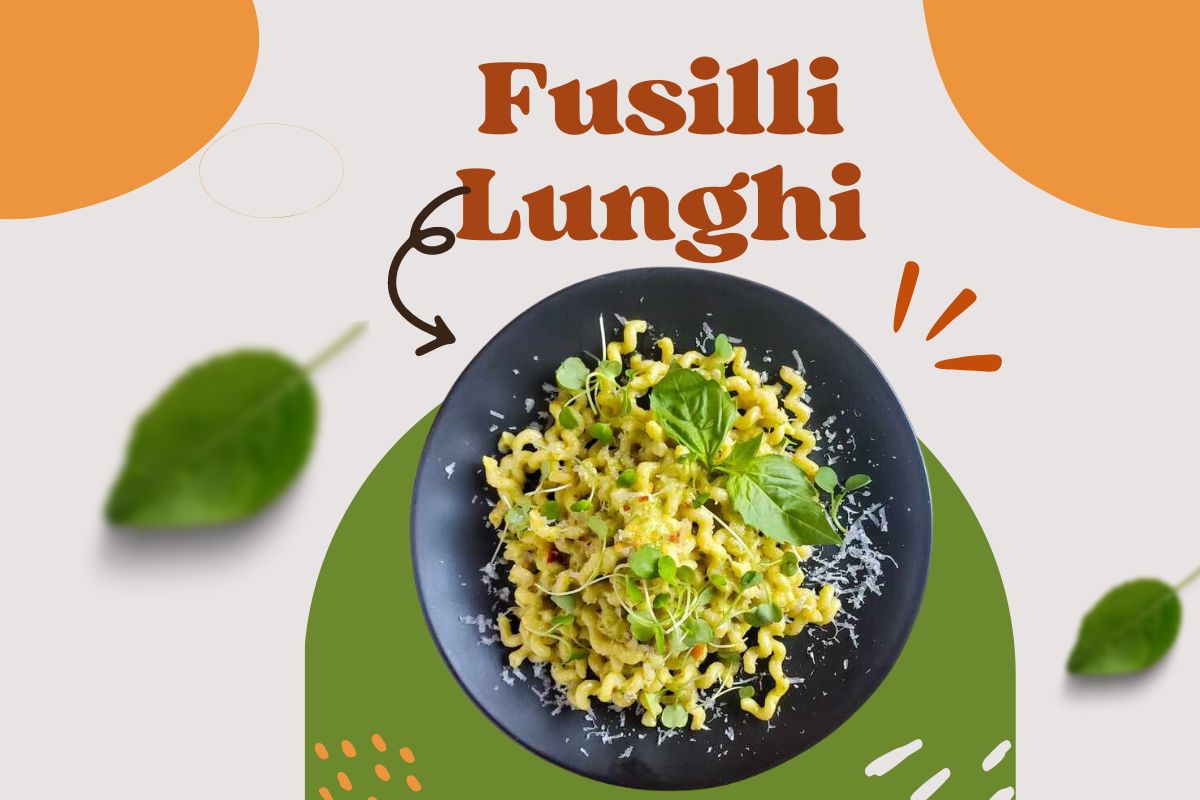The Italian pasta known as fusilli lunghi means “long fusilli.” It’s a stylish pasta shape that elevates any dish. It’s twisted like a spiral staircase, not straight like spaghetti. Not only does this twistiness add visual interest, but it also enhances the pasta’s texture and sauce-holding ability. It satisfies your taste receptors just like its shorter friend, normal fusilli.
in this article we explore everything about fusilli lunghi pasta its origin, making method, variations, and more.
The History of Fusilli Lunghi
The mystery surrounding the true origins of fusilli lunghi only serves to enhance the allure of this traditional dish. Many people suggest that it may have come from Southern Italy, in Campania, Puglia, or Sicily.
Here’s a glimpse into the possible historical roots of fusilli lunghi:
- Evolution of the Spindle: One theory suggests fusilli lunghi might have evolved from a tool used for spinning wool or silk, known as a “fuso” in Italian. The pasta shape could have been inspired by the way the fibers were twisted around the spindle.
- Ancient Techniques, Modern Delight: Another theory proposes that fusilli lunghi finds its roots in ancient pasta-making techniques. Early pastaio (pasta makers) might have used thin strips of dough wrapped around a metal rod to create the signature corkscrew shape.
- Regional Variations: Fusilli, in all its forms, might have emerged from regional variations of pasta shapes across Italy. Similar shapes like “fusilli calabresi” from Calabria or “aneletti” from Sicily might have paved the way for the longer.
Regardless of its precise origin, It has become a beloved pasta shape in Italian cuisine and beyond.
Variations of Fusilli Lunghi
The beauty of fusilli lunghi lies in its versatility. While the core shape remains a long, corkscrew spiral, there are subtle variations that can enhance the dining experience:
- Thickness Variations: it comes in two different sizes. While the thinner kind pairs well with lighter sauces or broths, the thicker fusilli lunghi have a more robust bite that is perfect for heavier sauces.
- Open or Closed Ends: Some fusilli varieties have open ends, allowing sauces to fully penetrate the spirals, while others have closed ends, creating little pockets that trap sauce for a delightful burst of flavor in each bite.
- Regional Twists: Different regions in Italy might have their take on this. Some variations might have wider or tighter spirals, adding a touch of regional flair to the classic shape.
These variations not only add visual interest to a dish but also influence how the pasta interacts with sauces and cooking methods.
Cooking Fusilli Lunghi
Cooking this is a straightforward process, but understanding a few key techniques can elevate your pasta game:
- Water Ratio: Use a generous amount of salted water (around 4 liters for 500 grams of pasta) to allow the fusilli lunghi ample space to cook evenly.
- The Perfect Al Dente: Aim for “al dente” (to the tooth) texture. This means the pasta should be cooked through but still retain a slight firmness when bitten. The typical cooking time for fusilli lunghi ranges from 8 to 12 minutes, depending on thickness.
- Embrace the Swirl: Don’t break the fusilli lunghi! Instead, gently swirl the pasta in the pot occasionally while it cooks to prevent sticking and ensure even cooking.
- Reserve that Pasta Water: Don’t discard the starchy pasta water! Reserve a cup or two of the cooking water before draining the pasta. This starchy water can be used to adjust the consistency of your sauce and create a silky, restaurant-quality finish.
Cooking Techniques
It is incredibly versatile, lending itself to a variety of cooking techniques:
- Classic Sauces: Pair your fusilli lunghi with a simple tomato sauce, a creamy Alfredo sauce, or a vibrant pesto for a delicious and satisfying meal. The spirals expertly capture the sauce, ensuring each bite is bursting with flavor.
- Baked Pasta: It is a fantastic choice for baked pasta dishes. Its ability to hold the sauce and its substantial form makes it ideal for casseroles or lasagnas.
- Light and Fresh Salads: it can make pasta salads more fun! Its shape is great for soaking up dressings and gives a nice texture to salads.
- Hearty Soups: For a comforting and warming dish, toss cooked fusilli lunghi into a vegetable soup or minestrone. The pasta adds substance without becoming mushy, perfect for a spoon-worthy winter meal.
Final Thoughts
It invites creativity in the kitchen. Whether you toss it with a zesty puttanesca sauce, pair it with wild mushrooms, or create your masterpiece, this pasta shape promises a delightful culinary adventure.
Tags: Fusilli LunghrecipeSpiral Pastas

